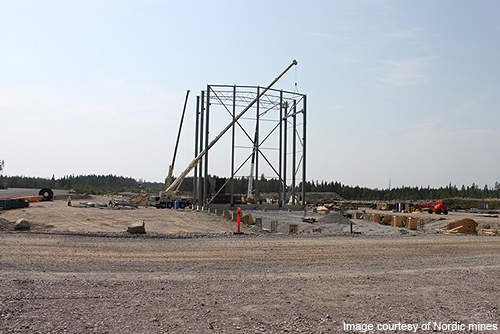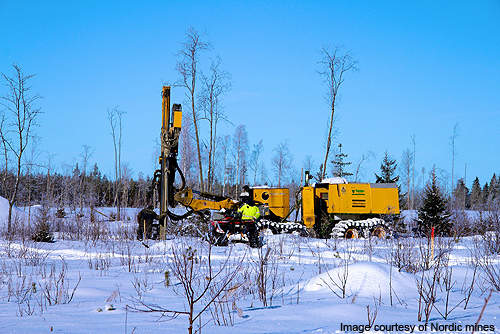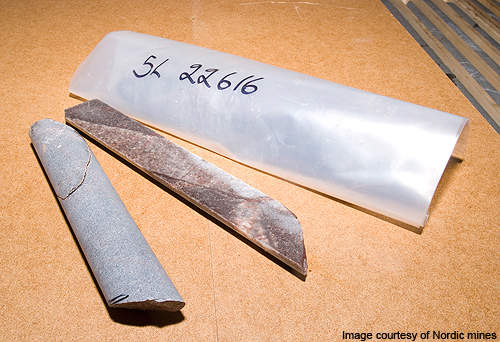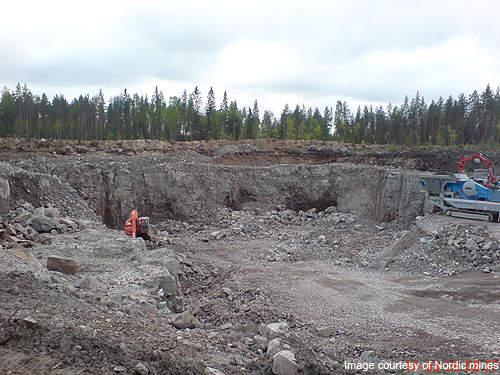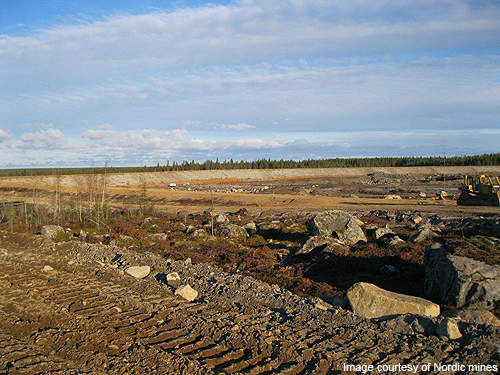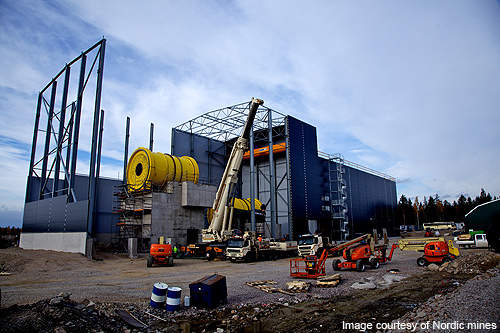The Laiva gold mine is located in Finland, approximately 15km south of the town of Rahee. Discovered in 1980s, the mine is owned by Nordic Mines and is one of the largest gold deposits in the Nordic region based on current reserve estimates.
The mine is currently in the advanced stage of development with all contracts in place to commence production in August 2011. Initial production is projected to be 2Mtpa, which will yield 115,000oz of gold a year. The mine is expected to be fully operational by early 2012 and achieve target production of 3,700kg of Au.
According to a feasibility study completed in March 2010, the mine will be profitable at a gold price of €535/oz. Nordic Mines has already secured 36% of the planned gold production by hedging gold at an average price of €1,049/oz until the first quarter of 2015. By doing so, the company has secured the financial and operational costs of the mine.
Laiva reserves
The mine contains 11.7mt of ore reserves including 5.7mt measured reserves graded at 1.85g/t Au and 6.2mt indicated reserves grading at 1.88g/t Au.
Geology and mineralisation
The mine lies within the north-western section of the Raahe-Ladoga suture zone that extends up to 450km in length. Structurally, the deposit is complex with various types of intrusive rocks cross cutting the metamorphosed and folded sedimentary rocks and volcanic schist belts.
The area is characterised by Proterozoic aged svecofennian rocks of intrusive and volcanic / sedimentary origin. The rocks are intruded by granitoid and gabbroic rocks of pre and post organic age. The rock hosted mineralisation occurs within quartz veins and silicified shear zones that range from few centimetres to 10m in width.
The volcanic rocks are primarily mafic uralite porphyrites and include 10% of the mineralised host rocks. The quartz diorite forms the core of the host rock and is large, homogenous and medium grained.
Except in granites, quartz veins are found across all types of rocks. Besides quartz, the veins consist of other silicates including arsenopyrite and chalcopyrite.
The veins are compact and sheared, and vary between one millimetre and half a metre in thickness. They occur as parallel swarms and are regularly associated with altered shear zones. They appear translucently blue-grey in colour and have a 60°-70° strike, 150°-160° dip direction and 70°-85° dip. At surface, the swarms of veins are visible to an extent of 70m.
The shear zone associated alteration includes silicification, propylitic alteration, pyroxenisation and minor amfibolisation. Alteration also occurs at the contact between veins and host rocks. Alteration associated with the host rocks and quartz diorites is weak and dominated by propylitic style alteration and alteration to micas.
Gold mineralisation occurs as tiny, angular inclusions within lollingite, quartz and arsenopyrite, the dominant ore mineral. Gold is hosted as metallic gold or maldonite. pyrrhotite, chalcopyrite, pyrite, cubanite, marcasite, sphalerite and hedleyite are the other ore minerals found.
Laiva mining method
Mining will be done in an open pit through conventional drilling, blasting, loading and hauling using leased equipment. Approximately 2mt of ore will be mined annually. The ratio of ore to waste is expected to be in the range of 1:4.
Processing will be carried out in a 2mt concentrator located around 1km from the mine site. Ore will be hauled to the crusher, crushed and trucked to the ore stockpile before being fed to the primary mill. Following screening of the milled material, the fine material will be sent to the secondary mill while coarse ore will be sent back to the primary mill.
To create a high-grade concentrate, the ore will be enriched in two Knelson separators. High-grade concentrate will be leached separately while the low-grade concentrate will be leached in a standard leach circuit. Arsenic pyrite will be separated in a flash flotation cell and the resultant stream will be processed in the high grade leaching circuit. The tailings will be removed and disposed.
Financing
The Laiva Gold Project is being financed through equity proceeds totalling €31m and €53m in loans received from the consortium of Standard Bank, UniCredit Bank and the state-owned Finnvera.
Contractors
The contract for the supply of mining equipment for the Laiva gold project was awarded to Metso. Valued at €30m, the contract encompasses the supply of the mill, pumps, flotation equipment, crushers, screens, piping, steel structures and a plant electrical, instrumentation and automation package, besides the associated services including supervision, start-up and commissioning.
Metso subcontracted the regeneration and gold room installation contract to Como Engineers.
The other equipment suppliers are Outotec and Ruukki.
In the first quarter of 2011, Atlas Copco was contracted for the supply of ROC L7CR type drilling rigs, Rotator/Hitachi for the supply and maintenance of three 115t excavators, and Forcit for the supply of explosives.
Tallqvist will transport ore and waste from the mine site. It will also be responsible for maintaining the roads and waste piles.
Ahma Engineers is responsible for project planning and management.

